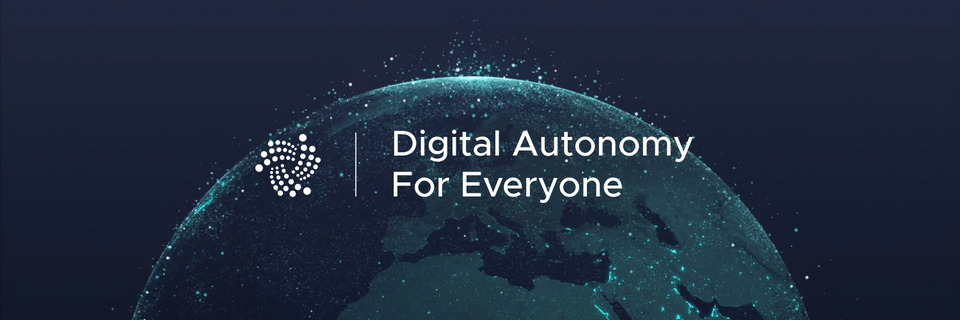Hot Take: IOTA will never be a currency

... it will be much bigger
[ - by Linus Naumann]
Yes, many in the cryptocurrency space believe that decentralized currencies will displace government-backed fiat currencies like Euro, Yuan or even the US-Dollar. These dreams derive from a general criticism against central banks, which are perceived as being intransparent, to control money by “printing it out of thin air” and potentially censoring money transactions. Some crypto believers even predict that government-backed currencies will crumble fully, for example through hyper-inflation, and that cryptocurrencies will be necessary to replace them.
A different viewpoint
However, other crypto communities, with the IOTA community being one the strongest examples, have a developed a very different vision for the future of distributed ledger technologies (DLTs), the core technology behind all cryptocurrencies. After all, it can be doubted that fiat money really is to fail anytime soon and some even argue, that democratically controlled money is preferable to the alternative, some sort of anarcho-capitalism, anyway.
These communities stand for tech-evolution, rather than revolution, seeing the destiny of cryptocurrencies not in replacing fiat, but to complement it. They understand that public DLTs unlock something much bigger and much more fundamental than just handling currencies: They are fully transparent, immutable and public data-bases that enable completely new classes of digital assets and digital representations:
- Digital identities
- Tokenized assets
- Unique assets (NFTs)
- Elections
- Data anchoring
- Currency
Point is: All of the aforementioned usecases IMPROVE currently established processes. They do not require failing states or currencies. Even though the importance of cryptocurrencies as money might in fact rise in the future, it is more likely that neither of them will become the main medium of exchange in everyday life for the average person anytime soon.
IOTA is digital real-estate
Few DLTs out there are aiming to enable all potential usecases at once. IOTAs vision of the future is different from this majority of DLT projects, because it understood the true value of DLT early. It tries aims to build the best general use DLT, not just another currency. With the IOTA token aiming to become digital real-estate.
To understand the inherent value of the IOTA token we must understand one thing first: Everything in this universe is finite and so are DLTs. And so there are two fundamental bottlenecks when using them, that must be treated as resources whenever there is more demand than capacity in the network:
Transaction throughput - Networks are only able to process a certain amount of transactions per second (tps). If there are more transactions incoming than can be processed at a certain time, naturally a market forms in which users try to get their transactions processed.
Data space – The total amount of data that can be stored in any DLT is finite, because the nodes that run the network must be able to fully store and update the data-base in real-time.
In the IOTA network transaction throughput and data space will be controlled by the IOTA token.
IOTA token derived “Mana” controls transaction throughput: IOTA token will passively create a resource called “Mana” in the network (after the IOTA 2.0 update). Mana in turn needs to be spend in order to issue transactions. This means IOTA token holders will control the first limited resource: Transaction throughput.
IOTA token used as “storage deposits” control data space: Using any amount of data space in the network will require users to lock IOTA tokens as a storage deposit for as long as this data space is used. This means anything from digital identities, NFTs, currencies and other digital assets will need IOTA tokens to be used.
In short: Virtually all usecases of the IOTA network will be powered by the IOTA token. That is why many people expect a future in which IOTA token holders will be able to rent away their digital real-estate and in turn get paid.
The value of the IOTA network depends on supply and demand – and the supply is fix
There exists a fixed supply of around 2.7 billion Mega-IOTA (Mi).
This means that owning 2700 Mi will grant their holder access to 1 millionth of the whole network.
The big unknown: the future demand for the IOTA network
The future demand of DLT transactions and data-space strongly depends on how societal and political acceptance develops over time. Will the upsides of increased transparency and autonomy of the individual be valued high by society? Might future regulations even demand to anchor sensitive data on public DLTs, maybe allow for the bridging of CBDCs? Or will governments shy away from additional transparency in fear of loss of control?
Even though the answers to these questions cannot be known at the current time, IOTA is uniquely well positioned to be accepted by industry, society and governments. IOTA is currently tested as being the core technology in a variety of high-profile governmental projects that aim to further the digitization of society. It is out of scope of this article to go into detail about IOTAs links to governmental projects, but I will provide a few selected links for those interested in further research:
- European Blockchain Infrastructure Service (EBSI)
- Trademark East Africa
- Digital MRV (measurement, reporting, verification of climate data)
- EnergieKnip